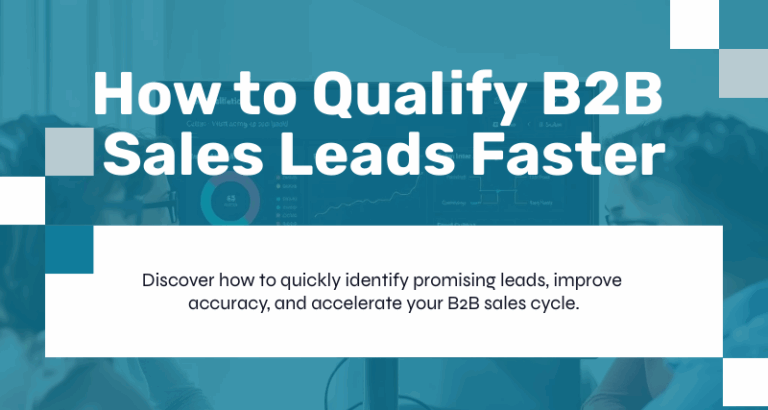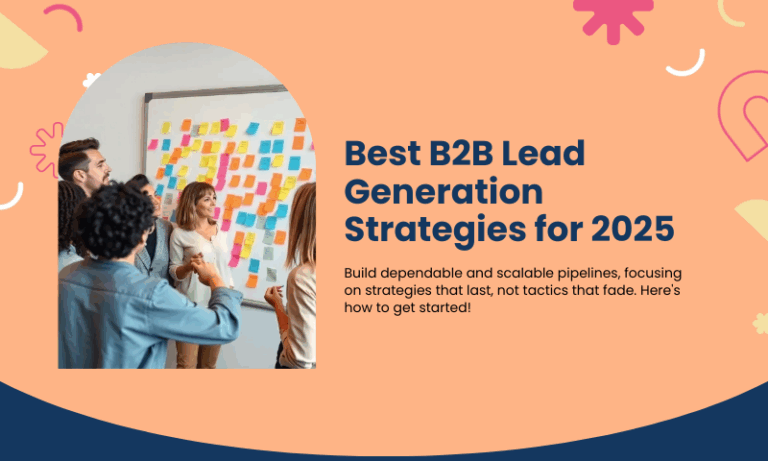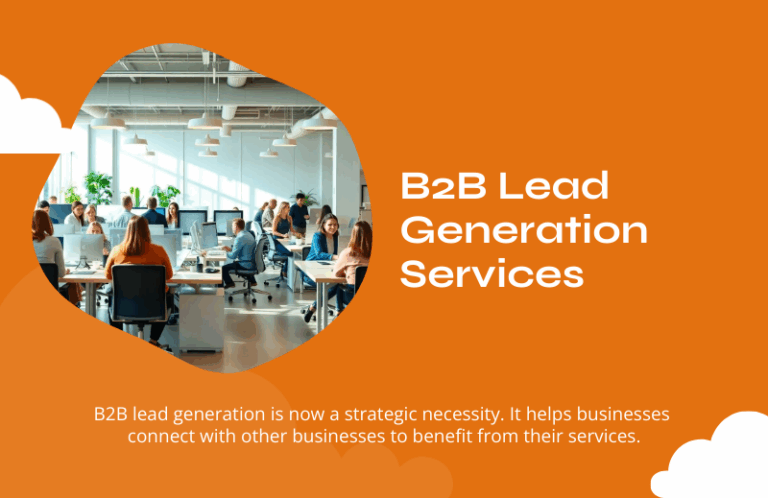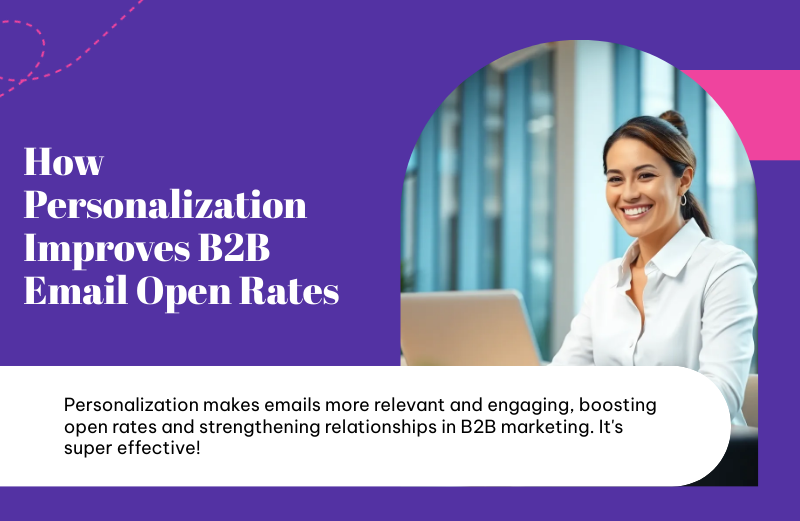
In today’s fast-paced B2B environment, decision-makers are bombarded with hundreds of emails daily, making it harder than ever to capture their attention. For B2B buyers, the daily flood of messages includes vendor pitches, newsletters, cold outreach, and internal communication. In this crowded environment, standing out is a challenge, and failing to do so means your emails never get opened, no matter how great the content inside may be. That’s where personalization in email marketing comes in.
Personalization is more than a gimmick; it’s about relevance and respect. Instead of treating every prospect as just another email address, personalization ensures your outreach acknowledges who they are, what industry they work in, and what problems they’re trying to solve. This approach not only makes your email look different in a crowded inbox, but it also makes the recipient feel understood and valued.
Recent studies back this up. Campaign Monitor reports that personalized subject lines increase open rates by 26%, while HubSpot has found that segmented, targeted campaigns generate much higher engagement than mass-blasted emails. For B2B marketers, these improvements aren’t small, they’re the difference between a missed opportunity and a new customer relationship.
What Is Personalization in Email Marketing?
At its core, personalization email marketing is about creating relevance. It’s the practice of moving away from “one-size-fits-all” mass emails and instead delivering content that feels directly crafted for the recipient. In today’s competitive B2B landscape, relevance is everything, if an email doesn’t immediately connect with the reader’s needs, it will likely be ignored or deleted.
Personalization works by using data to tailor messages around a recipient’s identity, behavior, and interests. This can be as simple as inserting someone’s first name, company name, or location into a subject line, which already signals that the message is intended for them specifically. Even these small touches can improve open rates significantly.
But personalization goes far deeper than just names. Advanced strategies involve designing campaigns around industry-specific challenges, job roles, and buyer intent signals. For example, a recipient who recently attended a webinar on cybersecurity best practices might receive a follow-up email with a tailored guide to securing enterprise networks. Someone who downloaded a whitepaper on marketing automation could be nurtured with a series of emails highlighting ROI case studies.
In B2B personalization, the stakes are even higher. Unlike B2C, where an individual makes quick purchase decisions, B2B buying cycles often involve multiple stakeholders and lengthy deliberation. Each decision-maker has different priorities:
- A CFO might be focused on cost efficiency and ROI.
- A CTO might prioritize scalability, security, or integration with existing systems.
- A VP of Sales might care most about adoption speed and team usability.
A generic, catch-all email won’t resonate with such diverse priorities. But a personalized campaign, one that adapts messaging for each role in the buying committee, shows that your company understands the nuances of the decision-making process.
Ultimately, personalization isn’t about adding a “friendly” touch. It’s about demonstrating genuine understanding of the recipient’s context, goals, and pain points. By aligning your email content with where the buyer is in their journey, personalization turns a standard sales pitch into a relevant, consultative conversation. That’s why it consistently leads to higher open rates, click-through rates, and conversions in B2B email marketing.
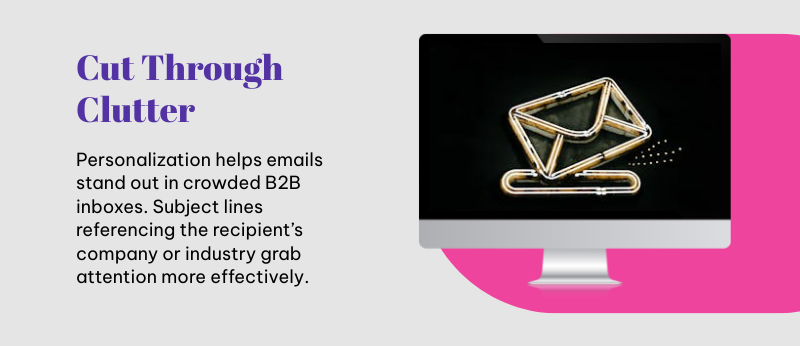
Why Personalization Boosts B2B Email Open Rates
Personalization in email marketing works because it makes your messages more relevant, timely, and engaging for the recipient. In the B2B world, where decision-makers are busy and inundated with messages, a generic email often gets ignored. By contrast, a personalized email signals that you understand the recipient’s role, responsibilities, and business challenges, immediately increasing the likelihood it will be opened.
1. Cuts Through Inbox Clutter
B2B professionals receive dozens, if not hundreds, of emails every day. Personalization helps your email stand out in a crowded inbox. For example, a subject line referencing the recipient’s company or industry is more likely to catch their eye than a generic “Check Out Our Latest Offering.” Even simple personalization, like including a first name, can significantly increase open rates because the email feels intended specifically for them, not mass-sent to everyone on a email list.
2. Builds Trust and Credibility
When a recipient sees that your email addresses their specific challenges or industry context, it demonstrates that your company has done its homework. This builds credibility, showing that you understand the prospect’s world rather than treating them as just another contact. In B2B lead generation, trust is a critical factor: buyers are more likely to open emails from sources they perceive as knowledgeable and relevant.
3. Increases Relevance
Relevance is the core of engagement. Personalized emails can reference previous interactions, content downloads, or website activity, making the email feel like a natural next step in a conversation. For example, following up on a webinar with content tailored to that topic shows you are aligned with the prospect’s current interests and priorities, increasing the likelihood of an open and further engagement.
4. Strengthens Long-Term Engagement
Personalization doesn’t just impact a single email, it strengthens ongoing relationships. By consistently delivering content that aligns with the recipient’s needs, role, and industry, you create a sequence of meaningful interactions. Over time, this improves brand recognition, trust, and engagement, ensuring that your future emails are more likely to be opened.
5. Supports Multi-Stakeholder Decision-Making
B2B purchases often involve multiple stakeholders with varying priorities. Personalized emails allow marketers to address each decision-maker’s specific concerns, whether that’s cost efficiency for a CFO, scalability for a CTO, or usability for a VP of Operations. This targeted approach increases the probability that each stakeholder opens the email, which ultimately moves the sales process forward.
In short, personalization in B2B email marketing improves open rates by making every message feel relevant, credible, and timely, rather than generic and easy to ignore. It transforms your emails from background noise into a valued communication that recipients are eager to read.
Types of Personalization in B2B Email Marketing
1. Subject Line Personalization
The subject line is the gatekeeper of every email, determining whether the recipient even opens your message. By including the recipient’s name, company, or role, you immediately signal relevance and attention to detail. Campaign Monitor reports that emails with personalized subject lines see up to 50% higher open rates.
Even simple personalization can make a huge difference. For example:
- Generic: “Introducing Our New CRM Software”
- Personalized: “Alex, Is Your Team’s CRM Ready for 2025?”
Beyond names, consider referencing industry-specific challenges or company goals in your subject line. This level of personalization shows that the email is crafted for them, not just mass-sent, which significantly increases the likelihood of engagement.
2. Segmented Campaigns
Segmentation is a method of personalization at scale. Rather than sending the same email to your entire database, you divide your audience into smaller, more targeted groups based on attributes like job title, industry, company size, geographic location, or stage in the sales funnel.
For example:
- Marketers might receive insights about campaign optimization and lead nurturing.
- CFOs get ROI-focused messaging highlighting cost savings.
- IT leaders see content on system integration, scalability, or security.
Segmented campaigns allow each group to receive content that aligns with their unique priorities, improving both open rates and engagement. It also prevents your messages from feeling irrelevant, which can reduce unsubscribes and spam complaints.
3. Behavioral Personalization
Behavioral personalization uses recipient actions to trigger timely, relevant emails. This can include interactions like attending webinars, downloading resources, visiting pricing pages, or clicking specific links in prior emails.
For instance, if a prospect downloads a case study on cybersecurity compliance, a follow-up email can include related best practices or solutions specific to their industry. This makes the email feel like a natural continuation of their journey, rather than a random sales pitch.
Behavioral triggers create a sense of dialogue and responsiveness, which boosts engagement and open rates, and positions your brand as attentive and helpful.
4. Dynamic Content
Dynamic content allows marketers to personalize portions of an email such as images, text blocks, offers, or call-to-actions based on recipient attributes or behavior, all within a single campaign.
For example, the same email template could display:
- Industry-specific case studies for each recipient.
- Customized offers based on role or prior interactions.
- Different visuals or messaging tailored to company size or sector.
Dynamic content enables highly relevant emails at scale, reducing the need to create dozens of separate campaigns while still providing personalized experiences. This efficiency increases open rates and encourages deeper engagement.
5. Account-Based Personalization
In account-based marketing (ABM), personalization reaches its most precise level. Emails are hyper-targeted to individual companies, departments, or even decision-makers, referencing initiatives, challenges, or leadership priorities specific to that account.
This approach is more resource-intensive, requiring thorough research and often custom content for each account, but it can yield huge payoffs. For high-value B2B clients, a single personalized email that resonates can generate millions in potential revenue.
ABM personalization signals dedication and credibility, dramatically improving open rates, responses, and engagement, especially when targeting executives or key stakeholders within major organizations.
Expanding these examples helps readers clearly see how each type of personalization impacts engagement and B2B open rates, and why combining several strategies can be so effective.
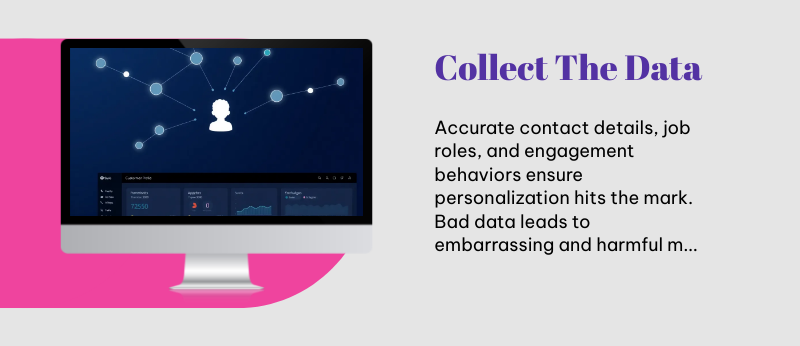
How to Implement Personalization in B2B Email Marketing
1. Collect the Right Data
The foundation of personalization is data. Collecting and maintaining accurate contact details, job roles, industries, and engagement behaviors ensures your personalization efforts hit the mark. Bad data leads to embarrassing mistakes, like addressing someone by the wrong name or sending irrelevant offers.
2. Invest in Marketing Automation
Tools like HubSpot, Marketo, or Salesforce Pardot make personalization scalable. They allow you to build automated workflows that adapt to recipient actions, ensuring your outreach remains relevant without manual effort.
3. Leverage CRM Insights
Your CRM is a goldmine for personalization. By syncing CRM data with your email platform, you can align messages with where prospects are in the sales funnel. For example, prospects in early stages might get educational content, while later-stage buyers receive pricing guides.
4. Test and Optimize
Personalization is powerful, but it’s not one-size-fits-all. A/B testing subject lines, calls-to-action, and content types allows you to refine what resonates most with your audience. Over time, testing improves not only open rates, but also clicks and conversions.
Challenges with Personalization Email Marketing
- Data Accuracy
Personalization is only as strong as the data behind it. If your database contains outdated or incomplete information, personalization efforts can actually harm your brand. Imagine sending an email with the wrong name or referencing a company someone left months ago, that instantly erodes trust. Maintaining a verified, accurate business email database is critical for avoiding embarrassing mistakes. - Over-Personalization
While personalization boosts engagement, going too far can backfire. Recipients may feel uncomfortable if you reference details that feel overly specific or invasive, like personal hobbies or recent LinkedIn activity. In B2B, the goal of personalization in email marketing is to be relevant, not intrusive. Keep it professional, centered on business challenges and industry needs. - Scalability
One of the biggest challenges is executing personalization at scale. It’s easy to tailor a few emails, but doing this for thousands of prospects requires robust marketing automation platforms, CRM integrations, and thoughtful planning. Without the right tools, personalization quickly becomes overwhelming for marketing teams. - Content Demands
To personalize effectively, you often need multiple versions of emails, landing pages, or assets tailored to different industries, roles, or buying stages. This creates a heavier workload for marketing teams. If you don’t have a clear process, content bottlenecks can slow down campaigns and reduce overall efficiency.
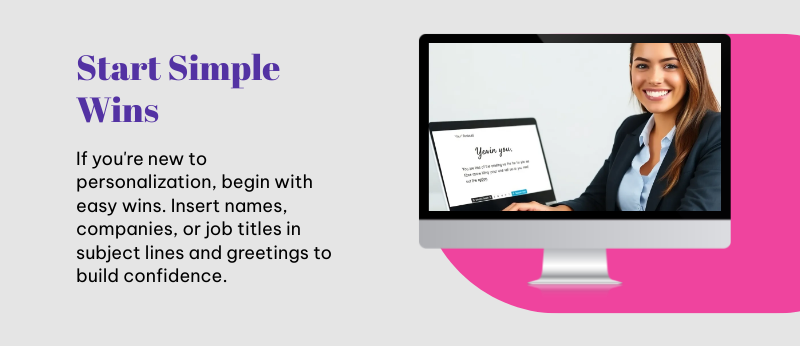
Best Practices for Higher Open Rates Through Personalization
- Start Simple, Then Layer in Complexity
If you’re new to personalization, begin with easy wins like inserting names, companies, or job titles in subject lines and greetings. Once your team builds confidence, you can expand into behavioral triggers, dynamic content, and role-based messaging. - Segment Your Audiences for Relevance
Instead of blasting one message to everyone, break your database into smaller segments; by job role, industry, company size, or buying stage. For example, a CFO should receive messaging about cost savings, while a CTO might be more interested in scalability. Segmentation ensures each recipient sees emails that speak to their priorities. - Leverage Data-Driven Behavioral Triggers
Timing matters as much as content. Use tools to send emails based on actions your prospects take, such as downloading a whitepaper, attending a webinar, or revisiting your pricing page. Behavioral triggers increase the chance that your email lands when the recipient is most engaged. - Keep Messaging Value-Focused, Not Salesy
Personalization works best when the content feels helpful, not pushy. Instead of pitching your product immediately, offer insights, case studies, or resources that solve real problems. This builds trust, making recipients more likely to engage with future emails. - Continuously Test, Refine, and Optimize
The best personalization email marketing strategies evolve over time. A/B test subject lines, CTAs, and content formats to see what resonates most with each audience segment. Use analytics to refine your approach and ensure personalization efforts continue improving open and click-through rates.
Conclusion
In a world where business decision-makers are constantly bombarded with messages, the ability to stand out is priceless. Personalization in email marketing is no longer a “nice-to-have” tactic, it’s a proven strategy that consistently drives higher open rates, stronger engagement, and better long-term relationships with prospects.
When done well, personalization transforms email from generic noise into a tailored, value-driven conversation. It’s not about inserting a first name into the subject line, it’s about showing that you understand your prospect’s role, their challenges, and the solutions they’re actively seeking. The result is an email that feels worth opening, not one that gets deleted without a second thought.
For B2B marketers, this means personalization should be woven into every step of your email strategy, from subject lines to segmentation, behavioral triggers, and dynamic content. Yes, it requires better data, smarter tools, and more intentional planning, but the payoff is clear: higher open rates, greater trust, and more opportunities to turn leads into long-term business partners.
FAQs About Personalization in B2B Email Marketing
1. How much can personalization really improve B2B email open rates?
Studies show personalized emails can improve open rates by 20–50%, depending on the level of detail and relevance used.
2. What’s the simplest form of personalization to start with?
Start with including the recipient’s name or company in the subject line and greeting, small touches that significantly increase engagement.
3. Is personalization email marketing effective for small businesses?
Yes. Even small teams can use tools like Mailchimp or ActiveCampaign to personalize campaigns without a large budget.
4. What kind of data is most useful for personalization?
Basic contact information (name, role, company) and behavioral data (downloads, page visits, webinar attendance) are highly effective for targeting.
5. Can over-personalization hurt campaigns?
Yes. Using overly detailed or sensitive information can feel intrusive. Focus on professional, relevant personalization.
6. What are the best tools for personalized B2B email marketing?
Popular tools include HubSpot, Salesforce Pardot, Marketo, Klaviyo, and Mailchimp, all of which offer segmentation and automation features.
7. How does personalization differ in B2B vs. B2C email marketing?
B2B focuses on roles, industries, and company needs, while B2C focuses on individual preferences and past purchases.
8. How can I measure whether personalization is working?
Track open rates, click-through rates, replies, and conversions. A/B testing subject lines and content can also help measure impact.
9. Is personalization important for account-based marketing (ABM)?
Absolutely. ABM relies on hyper-targeted, one-to-one messaging to engage key decision-makers effectively.
10. What’s the biggest mistake companies make with personalization?
Using outdated data or relying only on superficial personalization (like a first name) without aligning content to the prospect’s specific needs.
